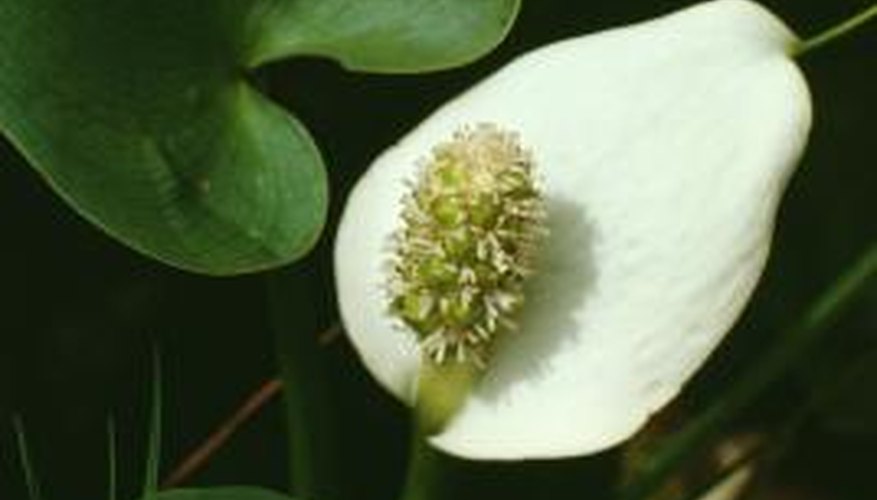Calla lilies are not true lilies but are members of the arum family in the genus Zantedeschia. There are two main groups: the large, white-flowered group and the group with smaller plants and coloured flowers. Several diseases can infect callas and cause them to wilt. Improper water management can also cause wilting in these graceful ornamentals.
Tomato Spotted Wilt Virus
Tomato spotted wilt virus (TSWV) is carried by a small flying insect called a thrip. Thrips suck the sap out of plant leaves, and, as they do, infected saliva is transferred to the plant. On calla lilies, the initial symptoms are white streaks on the stems turning to brown streaks and spots. Leaves will eventually yellow, wilt and fall off the plant. Unfortunately there isn't much you can do about this virus, according to Colorado State University. Control weeds, since they can harbour thrips and TSWV. Remove and destroy infected plants immediately.
- Tomato spotted wilt virus (TSWV) is carried by a small flying insect called a thrip.
- Thrips suck the sap out of plant leaves, and, as they do, infected saliva is transferred to the plant.
Soft Rot
Soft rot is a disease caused by a bacteria (Pectobacterium carotovorum) that enters the plant through injuries caused by insects. Initially, leaves turn a dark green before wilting. Once wilting occurs, you may start to see brown spots, followed by yellowing and death. There is little in terms of chemical control that can be done to control soft rot, according to Oregon State University. Avoid pooling water in your garden, don't use excessive nitrogen or overhead watering, and remove infected plants immediately.
- Soft rot is a disease caused by a bacteria (Pectobacterium carotovorum) that enters the plant through injuries caused by insects.
- Once wilting occurs, you may start to see brown spots, followed by yellowing and death.
Phytophthora Root and Crown Rot
Phytophthora root and crown rot is a fungal infection that causes plants to appear drought-stressed. They may wilt as soon as weather warms and then die rapidly. Occasionally leaves will turn yellow or brown prior to death. This fungus lives in the soil and is fostered by warm, wet conditions. Plant callas in well-drained soil, and avoid overwatering. Along with careful irrigation practices, foliar applications of fungicides containing fosetyl-al can be effective.
- Phytophthora root and crown rot is a fungal infection that causes plants to appear drought-stressed.
- Occasionally leaves will turn yellow or brown prior to death.
Irrigation
The two groups of calla lilies actually require quite different growing conditions. Planting them in the wrong spot and irrigating them incorrectly can cause wilting. The large, white calla lilies grow best in shady, moist conditions. In fact, they can be treated as subaquatic, according to Washington State University. If planted in full sun, white callas will need more water to keep their soil moist. Too little water can cause wilting. The smaller, colourful callas will rot if allowed to sit in water. These plants need to dry out between waterings. Rotting bulbs and roots can also cause wilting, so it is important to know which calla you have and to water it appropriately.
- The two groups of calla lilies actually require quite different growing conditions.
- The smaller, colourful callas will rot if allowed to sit in water.
